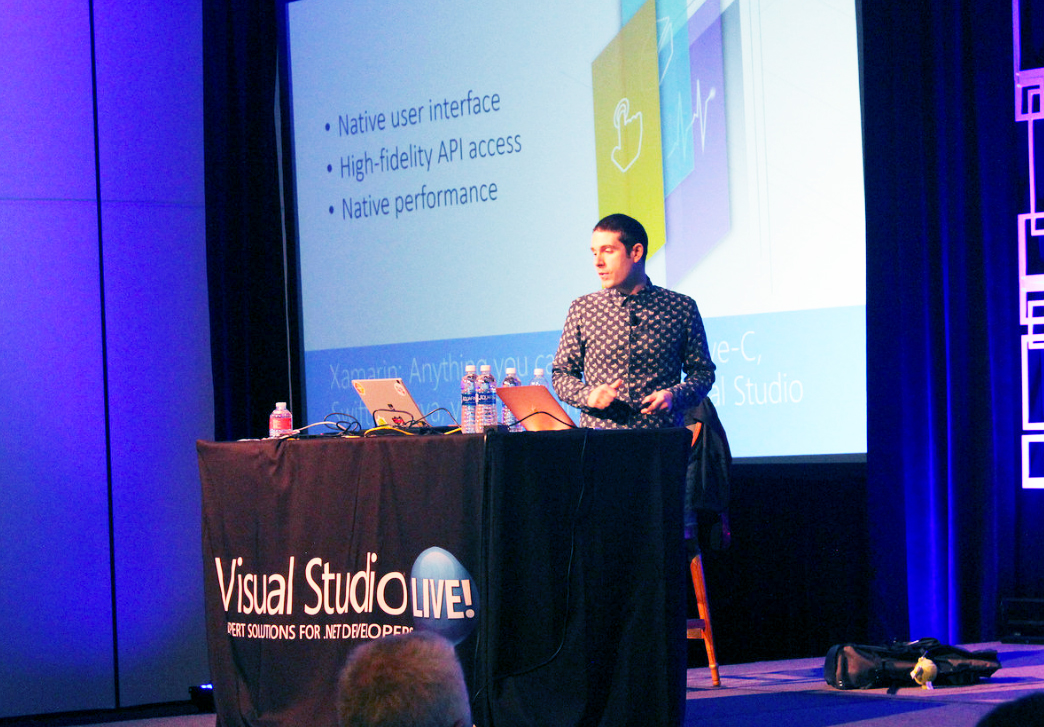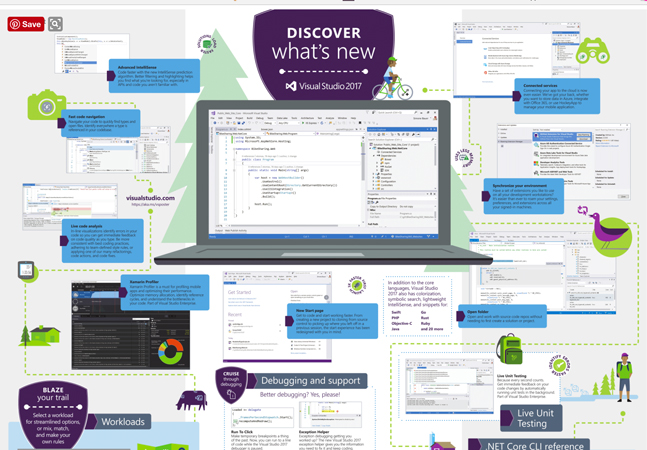
The Visual Studio Code page on GitHub hosts a slew of tips, and CodePlex will be shutting down later this year. Bonus: Inaugural .NET Insight Podcast!
- By Michael Domingo
- 04/14/2017

Azure Functions get you beyond the traditional client/server approach to app creation, right into the cloud. Let’s first look at triggers.
- By Jason Roberts
- 04/12/2017

If you have a process that needs to be performed -- but with variations -- then implementing the Template Method pattern will give you simpler, more extensible code. You’ll also recognize this pattern from all the times you work with it in the .NET Framework.

The custom formatters in the .NET Framework provide a more seamless way to mix traditional and custom formatting situations.

Support for Windows 10 Creators Update SDK and Xamarin Workbooks, updates to the Redgate Data Tools, and a number of performance enhancements are good reasons for developers to take heed with this VS 2017 update.
- By Michael Domingo
- 04/05/2017

If you want to ensure that the right code is loaded at the right time (and only loaded when you need it), you can start organizing your TypeScript code into focused files right now.

Syncfusion Essential Studio 2017 adds bevy of new controls for charts, text, and provides more responsive menus. Bonus: It's all now .NET Standard-compliant.
- By Michael Domingo
- 03/31/2017

The Microsoft development teams responsible for Visual F# and TypeScript recently provided their respective communities with some insight into their development efforts moving forward, now that the Visual Studio 2017 release hubbub has cleared. The goal with the insights via two recent blog posts, it seems, is toward more transparency.
- By Michael Domingo
- 03/30/2017

While Visual Basic is a bit more forgiving with data conversions, you'll need to jump through some hoops to do similar conversions in C#.

When your objects get sufficiently complicated to create, it's time to simplify your life by moving to the Builder pattern. The Builder pattern is not only a great pattern for creating complicated objects, it supports your application's further evolution.

Azure Service Fabric team hopes to spur improvements to Service Fabric .NET SDK through the open source community. ASF and the SDK have also recently been updated.
- By Michael Domingo
- 03/27/2017

It's at 1.0, with a version supporting Visual Studio 2017 to follow some time in May.
- By Michael Domingo
- 03/24/2017

Mobilize.net now has support for Visual Studio 2017 for users of its VB-to-.NET code migration tool.
- By Michael Domingo
- 03/24/2017

If you don't use a section in a View, then you'll get an error. But you may not find out until it's too late.

Visual Studio Code's February Build is now available, and it sports quite a few updates having to do with the workbench and debugging features, and includes a preview of a new code view.
- By Michael Domingo
- 03/23/2017

Similar to the UITableView in iOS and ListView in Android, the XF version can be used to cache images for use in other locations of an application.
- By Wallace McClure
- 03/22/2017

The Entity Framework DbEntityEntry object lets you do all sorts of things you probably didn't think were possible, including getting the latest data from the database (without losing your current data) and invoking the .NET Framework validation subsystem.

No longer a pipe dream, cross-platform coding has been made fairly straightforward and nearly ordinary with tools from Xamarin and others. At VSLive!, Microsoft's James Montemagno demonstrated the ease with which cross-platform apps can be delivered without venturing too far from the C# space.

Let's use this classical statistics technique -- and some R, of course -- to get to some of the latent variables hiding in your data.
- By James McCaffrey
- 03/16/2017

Nifty, printable info graphic shows everything new and updated in the latest developer suite.
- By Michael Domingo
- 03/15/2017